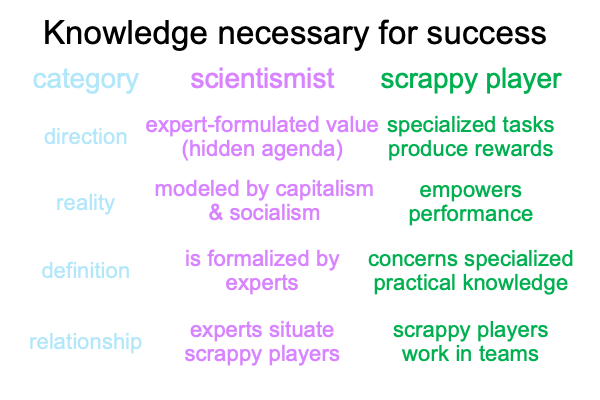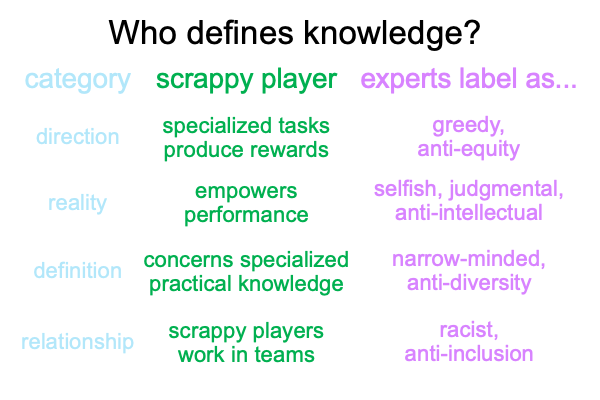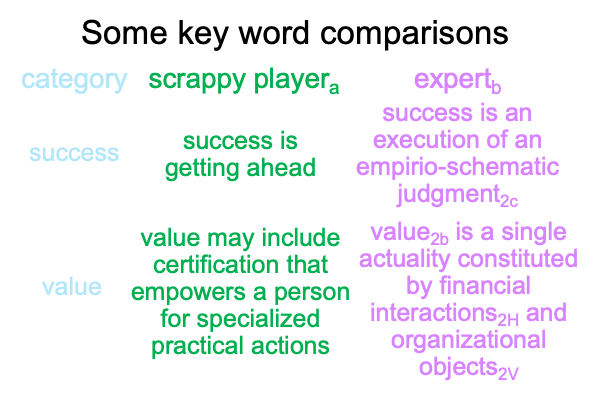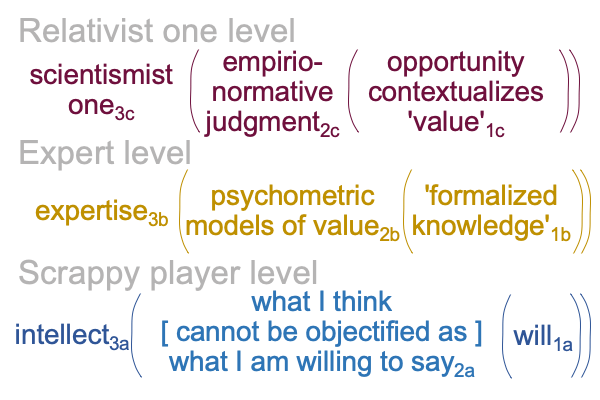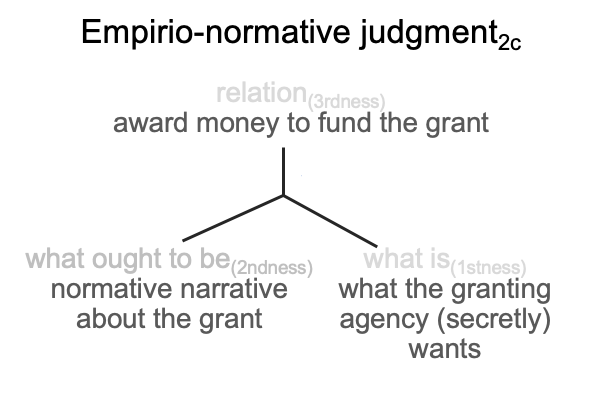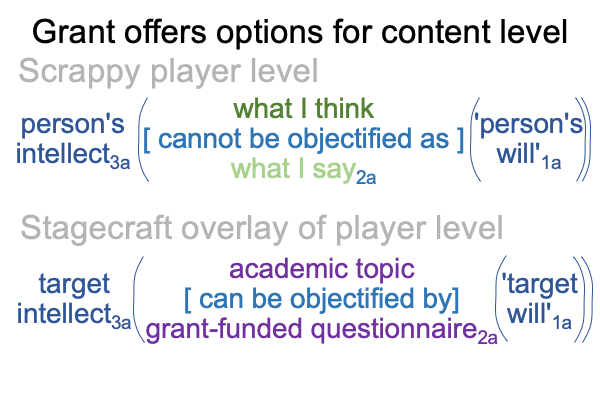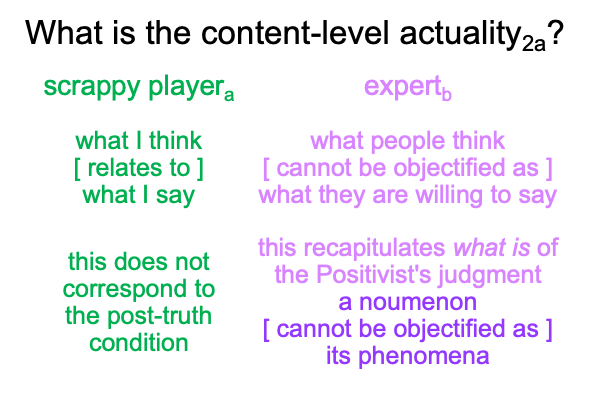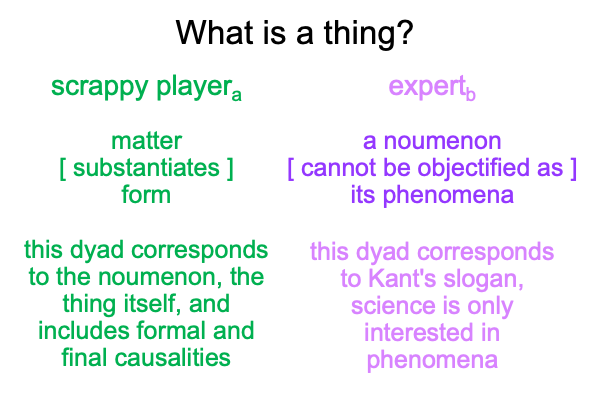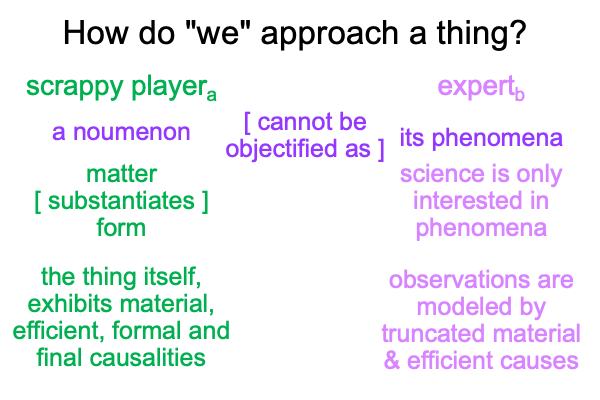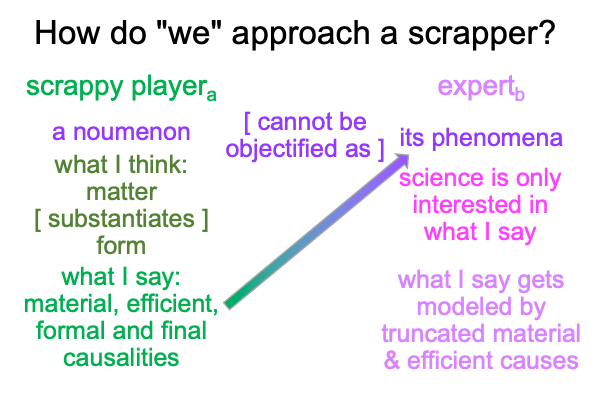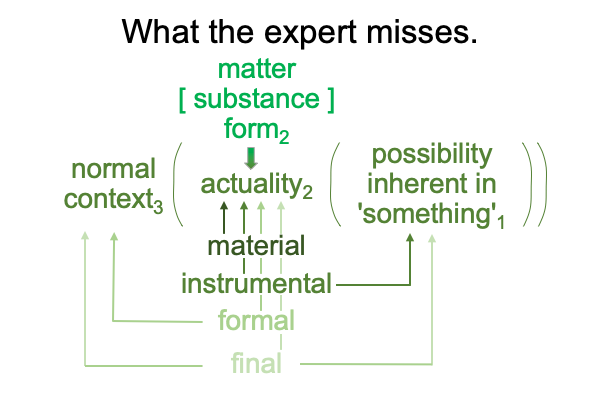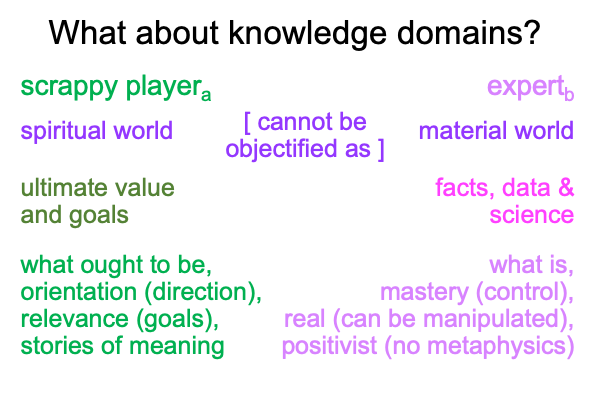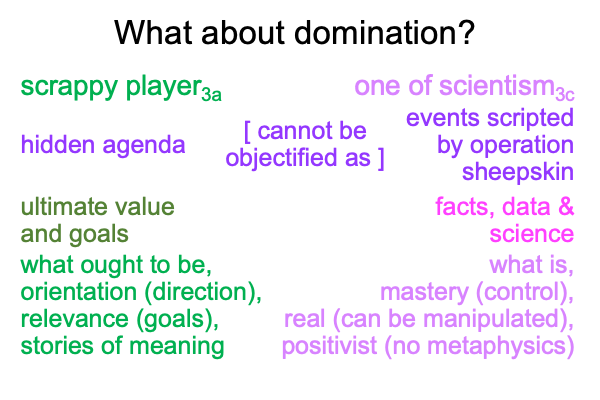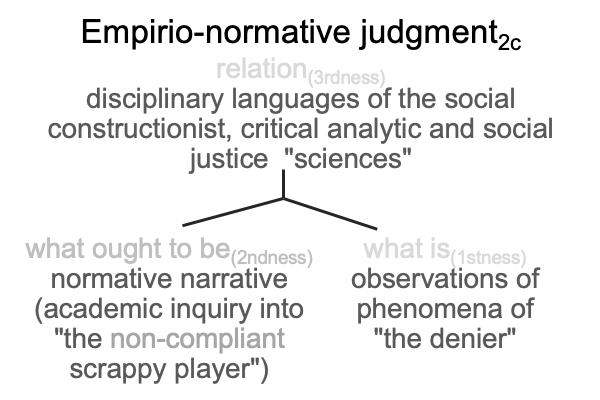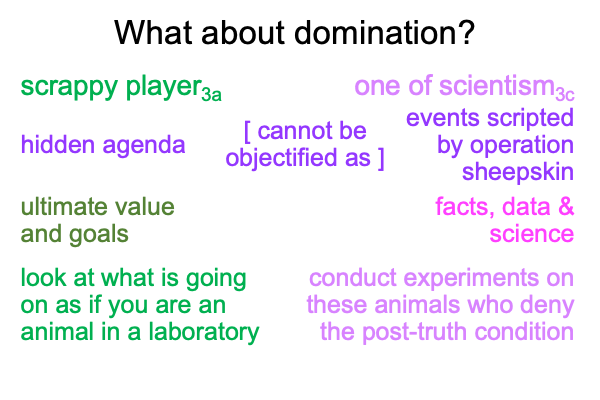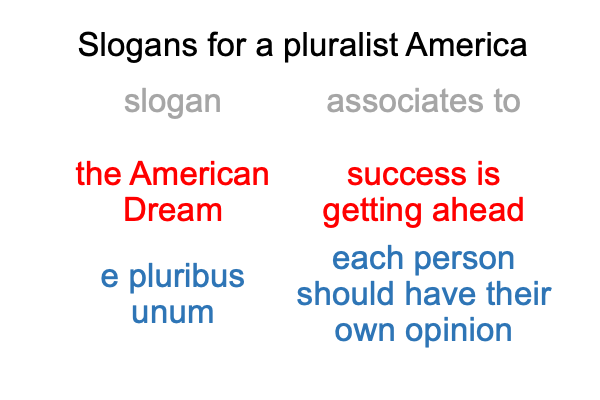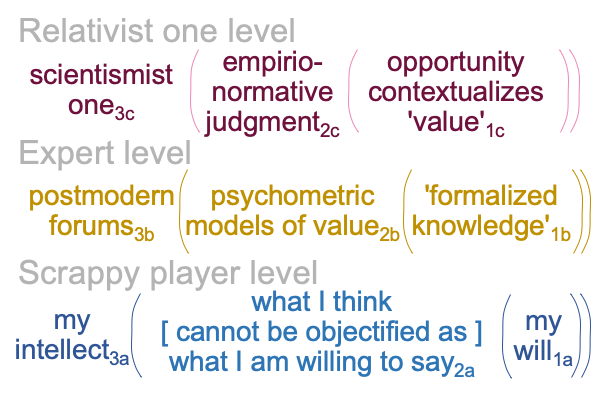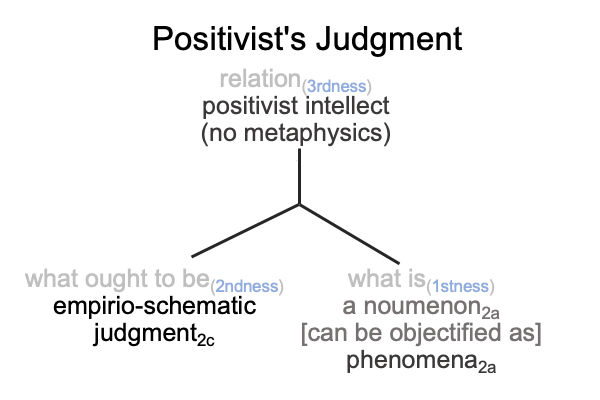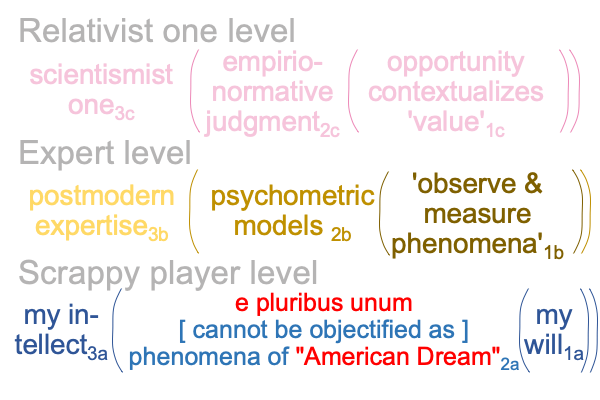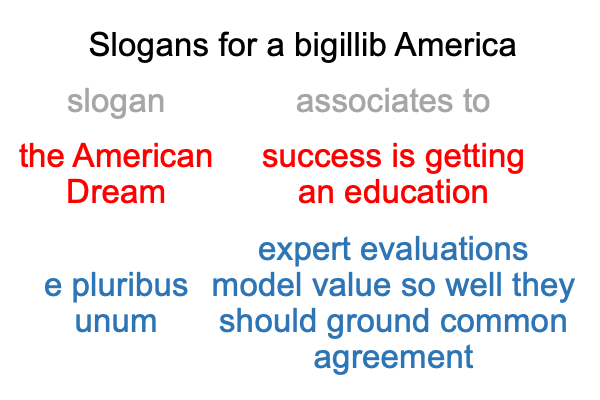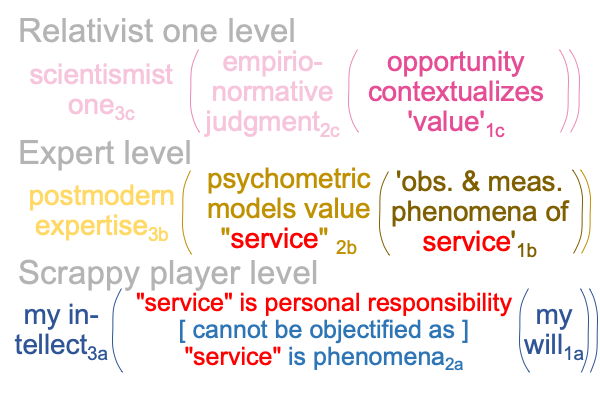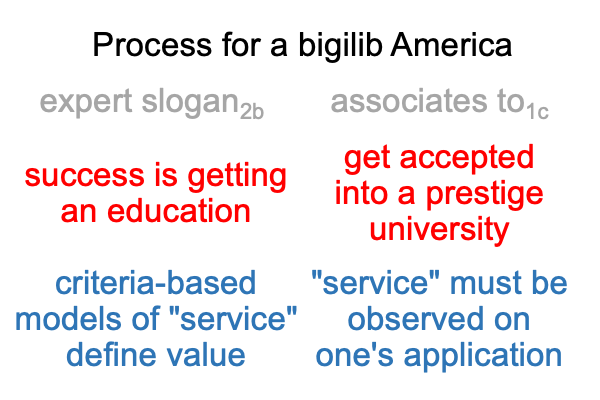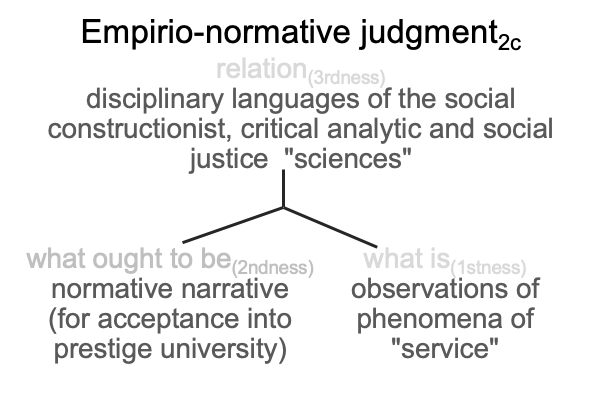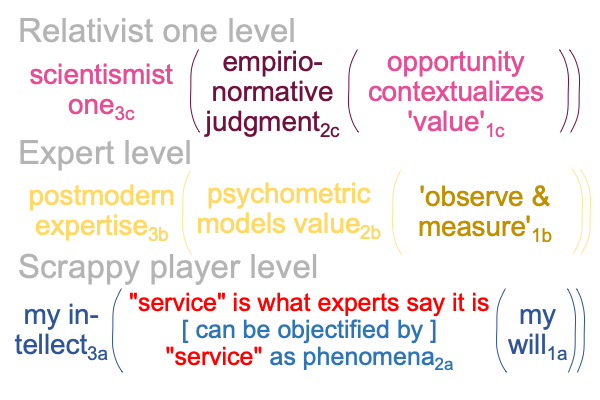Looking at Michelle Stiles’s Book (2022) “One Idea to Rule Them All” (Part 17 of 23)
0680 However, there is one more comparison that must be made.
One comes from judgement2c in the interscope for what I think.
One comes from the empirio-normative judgment2c for the post-truth condition.
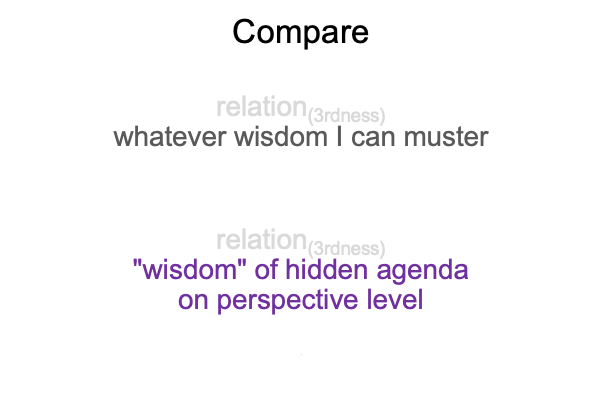
Here is a question.
What constitutes “success”?
0681 All spontaneous traditions associate “success” with “getting ahead”, that is, personal prosperity. The more religious the tradition, the more “getting ahead” takes on a relational aspect. The logical extreme, found in all religious traditions of the Axial Age, is the beatific vision, consisting of sensing (content-level actuality) and perceiving (situation-level actuality) the One Who Brings All Into Relation (perspective-level actuality). Here, the One is a triadic relation, where the Universality of What Cannot Be Sensed (the what is of purely relational being) and the Intelligibility of What Cannot Be Perceived (the what ought to be of purely relational being) come into um… Pure Relation (the third element of a purely relation being).
The beatific vision defines “success2c“.
All material achievement2a pales in comparison.
0682 But, the Cold War Among Materialist Ideologies takes its toll.
Almost every scrappy player today thinks that “success2a” means “material wealth and security”.
And, that reflects how successful operation spider’s web has been.
0683 Why?
This is precisely what the expert level promises for the crappy-level player.
And, it is not true.
Why?
The meaning of “success” is not what it seems to be.
0684 For the one of scientism3c, “success2c” is the execution of an empirio-normative judgment2c, according to a particular opportunity1c that arises from expert assessments2b.
Yes, the game is rigged.
0685 Operation spider web is a network of operation sheepskins, sometimes working coherently, sometimes not. Each person who serves as the one of scientism3c must work in concert or in competition with other ones of scientism3c. But, each person serving as the one of scientism3c is a relativist one3c, who is theoretically outside of all jurisdictions, included the jurisdictions of other scientismist ones3c.
At some point, it seems that the elites may begin fighting one another.
0686 Imagine living as a sheep among sheep, and oddly, the “leader” sheep want the herd to go in different directions, as if they no longer define the same reality, and their relationships are about to… oh, look… they are biting one another, viciously, like wolves. Oh no! They are wolves! Run for your lives!
But wait. The wolves stopped fighting with one another. The wolves are starting to cooperate. Oh, this is worse.
Run for your lives!
0687 Now, replace the word, “bite”, with “speaking to”.
And, replace the word, “cooperate”, with “enter into communion with one another”.
The wolves come into communion with the one idea to rule them all.
0688 Let me look at the comparison between the relation within the interventional sign-vehicle (SVi) for the post-truth condition and the relation in the judgment2c that is on the perspective level of the scholastic interscope for how humans think.
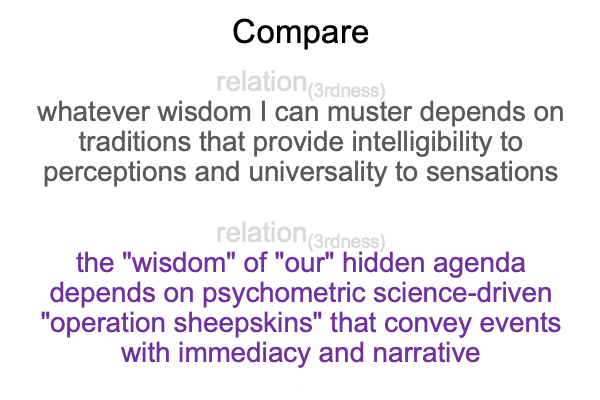
0689 The wisdom of the Axial Age religions, as well as other now ancient traditions, provides intelligence to our perceptions and universality to our sensations. Ancient wisdom trains us. It calls us into communion.
The wisdom of the hidden agenda, the normative judgement2c of the post-truth interscope, pretends to provide intelligibility and universality. Media narratives are formulated to dominate our intelligibility. Media reports are packaged to be so sensational as to undermine the commonality of our impressions and feelings. This is only possible in the arena of pseudo-reality, where the reader does not directly experience the news that is being reported.

